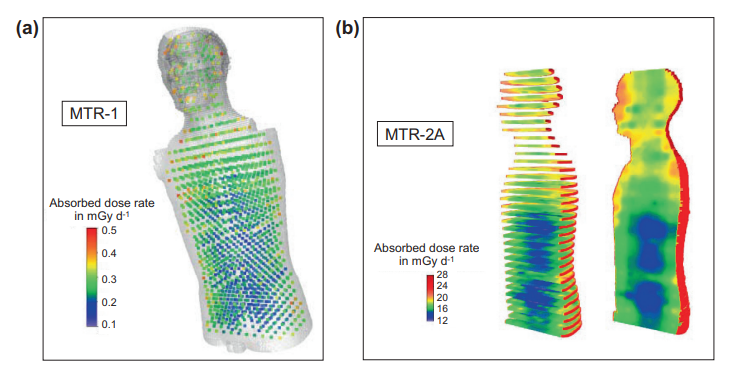Journey to Mars and Cosmic Radiation
Journey to Mars and Cosmic Radiation
CHAN Siu-wai Wallace and Winfield NGO
July 2023
From "Red Planet" to "The Martian", the barren and desolate red planet besides the Earth has always been a world full of fantasies for sci-fi movie lovers. Many of them wish that one day they could visit Mars in person. Their dreams seem getting closer to reality following numbers of successful unmanned Mars exploration missions commissioned by China, the United States, and European Space Agency in recent years. People all over the world are looking forward to having first human landing on Mars. For those having a more ambitious mind set, they have even been exploring the possibility of having large-scale migration to Mars. Could Mars exploration in fact be carried out smoothly as we think?
Unlike our mother Earth, which is well protected by thick atmosphere and a charge-shielding magnetic field against cosmic radiation, staying at Martian surface for some time for exploration is highly challenging and a very difficult task for human beings. Assessment based on radiation measurement data reveals that the average daily dose rate of cosmic radiation on Martian surface is 0.67 mSv. In addition, the average cosmic radiation dose during the journey to Mars is 1.8 mSv per day, which is close to the annual radiation dose from natural background radiation (~ 2 mSv) received on the Earth. NASA's Spacecraft ‘Curiosity’ has once measured the total radiation dose during the three phases of its mission, including the 180-day journey to Mars, 500-day surface survey, and 180-day return journey. It showed that the total amount of radiation dose at the three phases was similar (figure 1). However, the study had not taken into account the possibilities of other radiological events in Space such as solar particle events (figure 2) or radiological variations on Martian surface (figure 3). The high radiation dose could pose significant threat to astronauts’ health and safety.
Sci-fi Movie ‘The Wandering Earth’ manifested the health threat of cosmic radiation to the astronaut. Once an astronaut embarks on a Space journey, he/she is exposed to different ionizing radiation from various sources, including cosmic radiation from the Milky Way, Protons and Electrons emitted by the Sun, protons, electrons and neutrons as trapped by the Earth's magnetic field in the Van Allen belts . Based on the estimation of Space journey duration, the cumulative radiation dosage for a single mission could exceed 100mSv, which can have long term health impact. One may wonder: How should human beings cope with such radiation threat brought by Space travel?
With the advancement and application of measurement technology of radiation dose in human organs of Space travel, this can help establish more comprehensive radiation safety assessment methods for the development of new protection technologies to safeguard the health and safety of astronauts. New technological means, such as Phantom Torso (see figure 4), ray tracing technology, polyethylene-based nanocomposites and water walls, have shown great potential in the reduction of radiation exposure. These advancements in radiation protection technologies give us hope for the realization of Space travel to Mars one day in the future.

Figure 1 Radiation Exposure Comparisons with Mars Trip Calculation.
(Source: Radiation Exposure Comparisons with Mars Trip Calculation | NASA)
(Source: Radiation Exposure Comparisons with Mars Trip Calculation | NASA)

Figure 2 In 2013, A weak solar particle event has been observed by The Radiation Assessment Detector (RAD) instrument on NASA's Curiosity on the surface of Mars, which brought significant fluctuation of radiation dose. Solar particle event is so far one of the most uncertain contributions of radiation dose to Mars mission.
(Source: Radiation Measurements on Mars – NASA Mars Exploration)
(Source: Radiation Measurements on Mars – NASA Mars Exploration)

Figure 3 Estimated Radiation Dosage on Mars.The colors in the map refer to the estimated annual dose equivalent in mSv. The range is generally from 100 mSv (color-coded dark blue) to 200 mSv (color coded dark red).
(Source: Estimated Radiation Dosage on Mars (nasa.gov))
(Source: Estimated Radiation Dosage on Mars (nasa.gov))

Figure 4 (a) Measured absorbed dose rate distribution in the MATROSHKA (Name of the Human Torso) phantom outside of the International Space Station (ISS) based on thermoluminescence detector readings. (Source: https://journals.sagepub.com/doi/pdf/10.1177/ANIB_42_4)
Figure 4 (b) Absorbed dose rate distribution in the MATROSHKA (Name of the Human Torso) phantom inside the ISS obtained by interpolation of point doses over the whole phantom volume. (Source: https://journals.sagepub.com/doi/pdf/10.1177/ANIB_42_4)
Figure 4 (b) Absorbed dose rate distribution in the MATROSHKA (Name of the Human Torso) phantom inside the ISS obtained by interpolation of point doses over the whole phantom volume. (Source: https://journals.sagepub.com/doi/pdf/10.1177/ANIB_42_4)